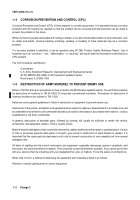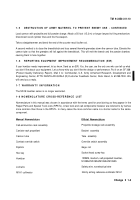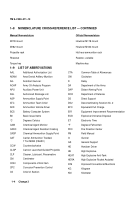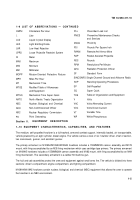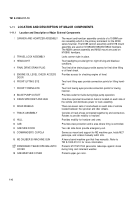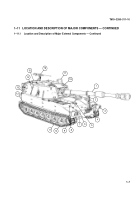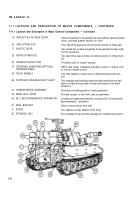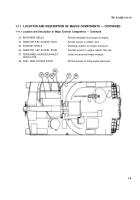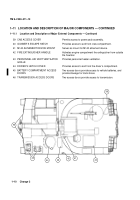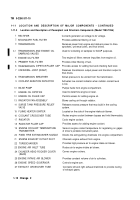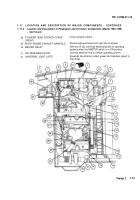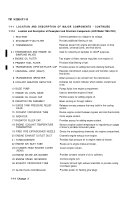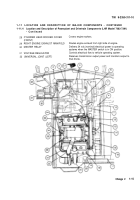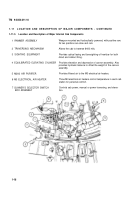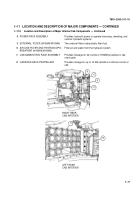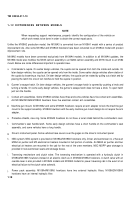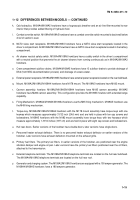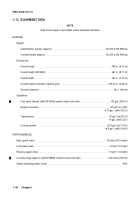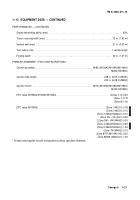TM-9-2350-311-10 - Page 50 of 775
TM 9-2350-311-10
1-11
LOCATION AND DESCRIPTION OF MAJOR COMPONENTS - CONTINUED
1-11.3
Location and Description of Powerplant and Drivetrain Components (Model 7083-7396)
1
2
3
3.1
4
5
6
7
8
9
10
11
12
13
14
15
16
17
18
19
20
21
RECTIFIER
SECONDARY FUEL FILTER
TRANSMISSION
TRANSMISSION AND ENGINE OIL
SAMPLING VALVES
ENGINE OIL FILTER
PRIMARY FUEL FILTER
TRANSMISSION DIPSTICK/FILLER CAP
UNIVERSAL JOINT (RIGHT)
TRANSMISSION BREATHER
COOLANT AERATION DETECTOR
BILGE PUMP
ENGINE OIL DIPSTICK
ENGINE OIL FILLER CAP
RADIATOR FAN ASSEMBLY
SURGE TANK PRESSURE RELIEF
VALVE
FLAME HEATER IGNITER
COOLANT CROSSOVER TUBE
RADIATOR
RADIATOR FILLER CAP
ENGINE COOLANT TEMPERATURE
TRANSMITTER
FIXED FIRE EXTINGUISHER NOZZLE
ENGINE EXHAUST OUTLET DUCT
22 TURBOCHARGER
23 ENGINE AIR INLET TUBE
24 CYLINDER HEAD ROCKER COVER
(REAR)
25 ENGINE INTAKE AIR BLOWER
26 ENGINE SPEED GOVERNOR
27 EXHAUST CROSSOVER TUBE
1-12 Change 2
Converts generator ac voltage to dc voltage.
Provides additional filtering of fuel.
Receives power from engine and delivers power to drive
sprockets, universal joints, and final drives.
Used for collecting oil samples for AOAP purposes.
Two engine oil filters remove impurities from engine oil.
Provides initial filtering of fuel.
Provides access for adding fluid and checking fluid level.
Receives transmission output power and transfers output to
final drives.
Allows pressure to be vented from the transmission.
Activates low coolant indicator when radiator coolant level
is low.
Pumps fluids from engine compartment.
Used to determine engine oil level.
Permits access for adding engine oil.
Blows cooling air through radiator.
Releases excess pressure that may build in the cooling
system.
Located on the side of the engine intake air blower.
Routes engine coolant between bypass and inlet thermostats.
Cools engine coolant.
Provides access for adding engine coolant.
Sensors engine coolant temperature for registering on gages
of driver’s portable instrument panel.
Directs fire extinguishing chemicals into engine compartment.
Channels engine exhaust from engine.
Provides high pressure air to engine intake air blower.
Routes air to engine intake air blower.
Covers engine rockers.
Provides constant volume of air to cylinders.
Controls engine rpm.
Connects left and right exhaust manifolds to provide routing
of exhaust gases.
Back to Top

